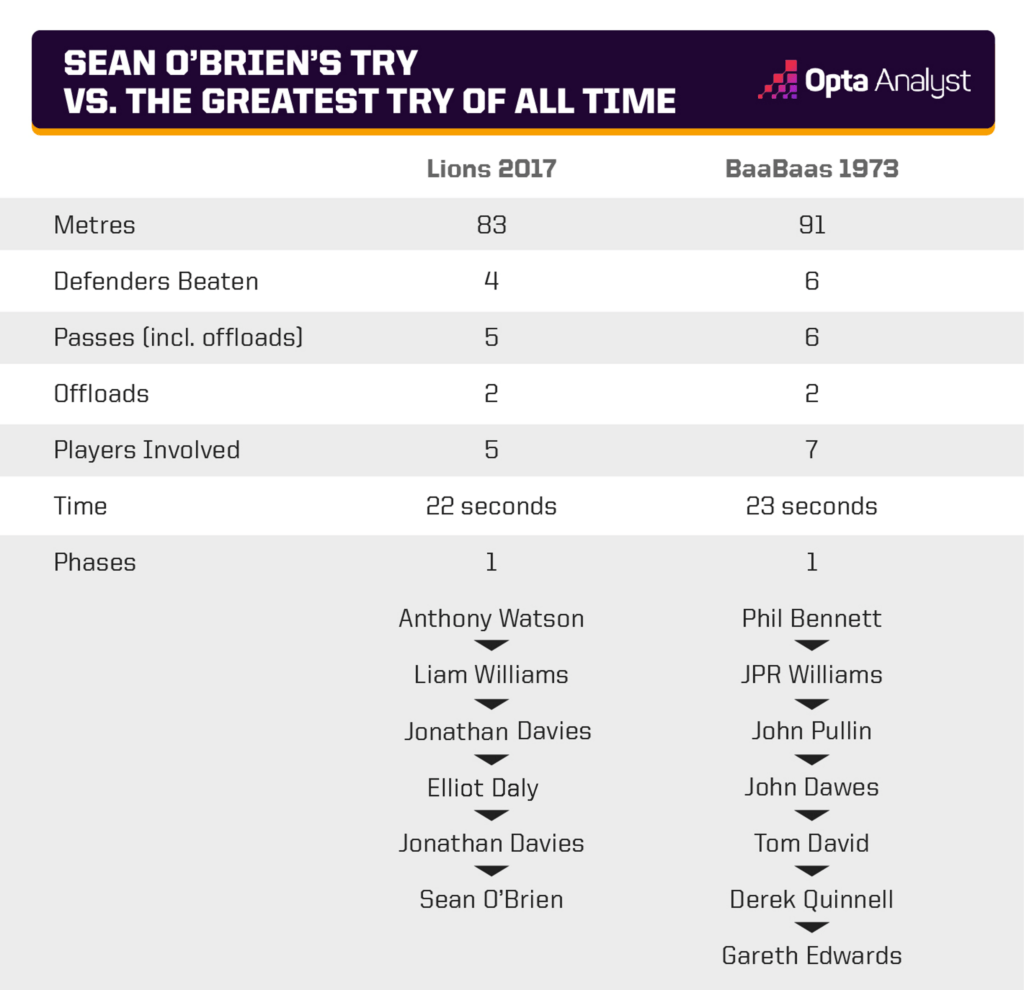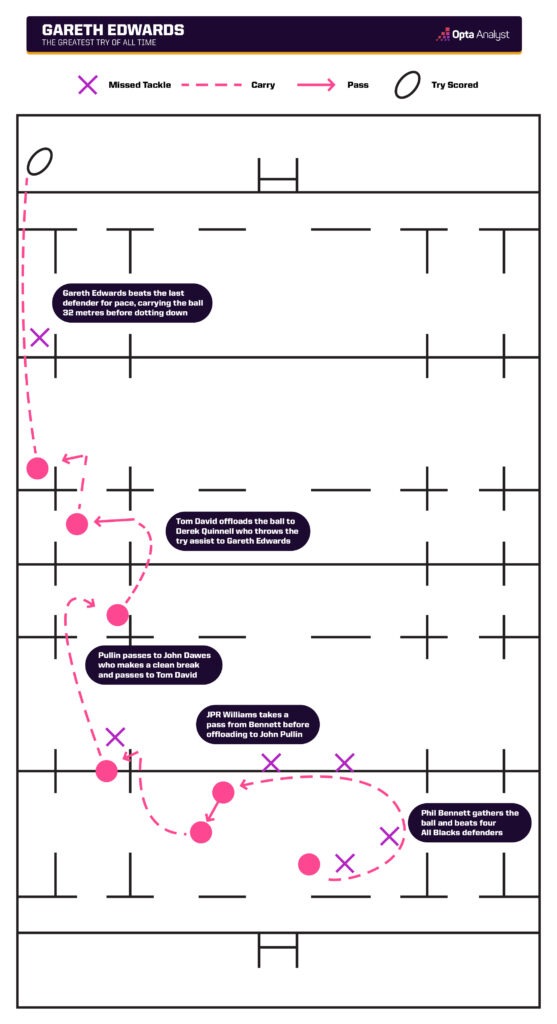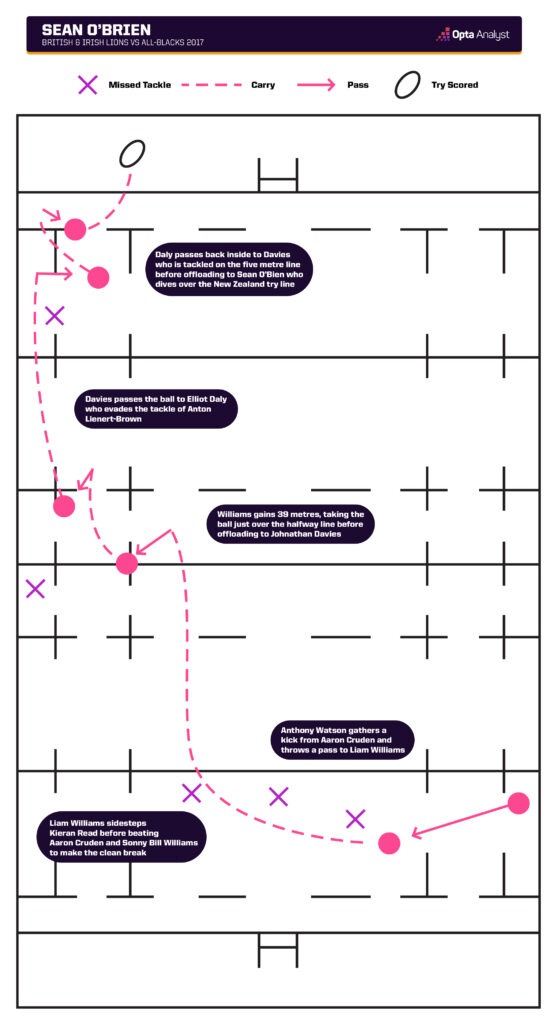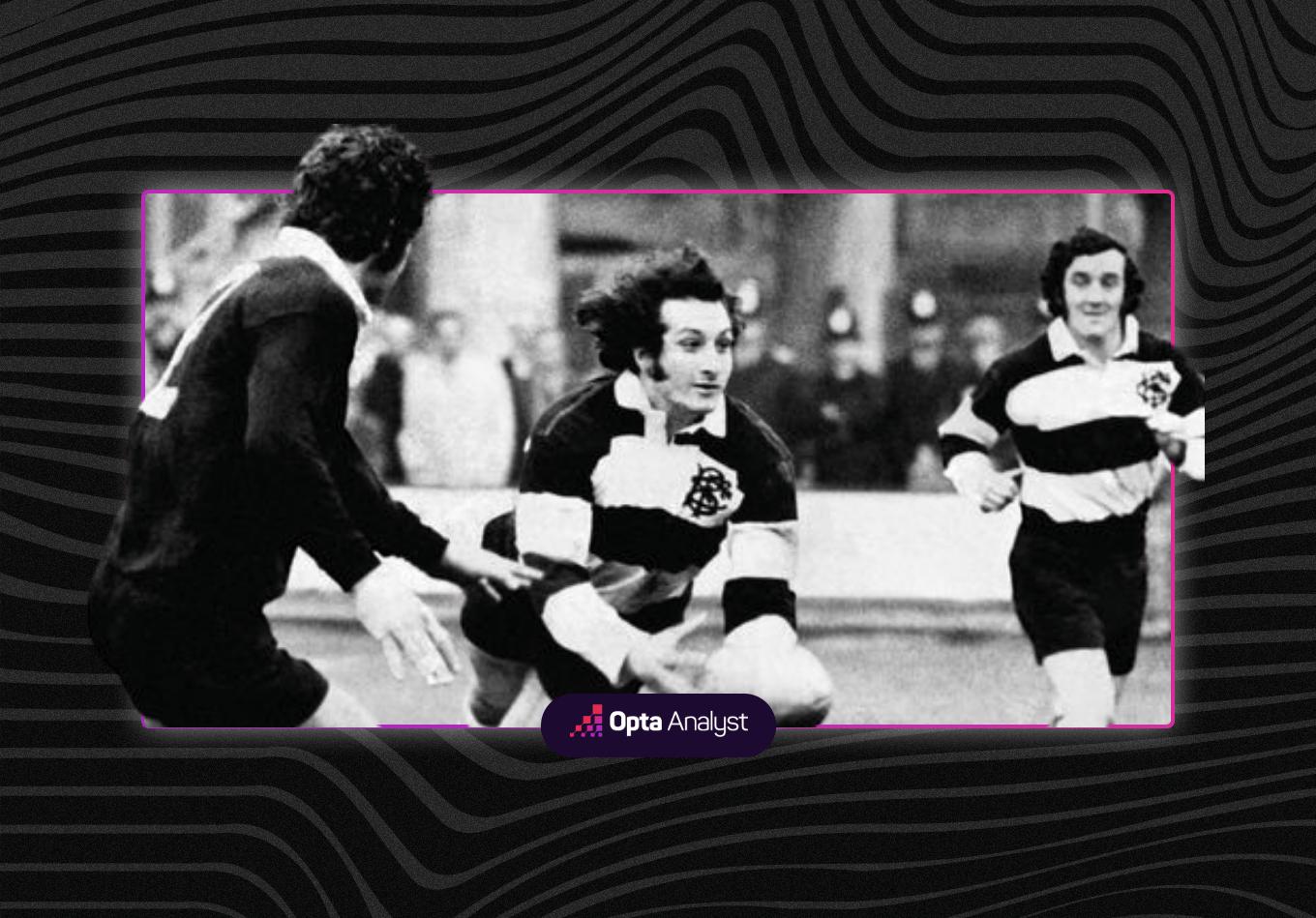“Brilliant! Oh, that’s brilliant!” Reliving the Barbarians’ scintillating try against the All Blacks in 1973 in all its glory.
27 January marks 50 years ago to the day that the Barbarians produced what many deem to be the greatest try ever scored, traversing the length of the pitch to dot down in the opening minutes of their match against the All Blacks.
It was an iconic try produced by iconic players; the move started with the dancing feet of Phil Bennett and was finished by the searing pace of Gareth Edwards, two giants of the game. The supporting cast weren’t bad either, with JPR Williams, John Pullin, John Dawes, Tom David and Derek Quinnell all getting their hands on the ball during a breathless passage of play.
If that score had happened in today’s game, we would be able to break down all aspects of the try, giving deeper context to the five four-pointer. For example, that try was Edwards’ first – and only – score against New Zealand. He’d played eight Tests against them for either Wales or the Lions, while this was the second of his three non-capped games against them for the Baa-Baas.
The Anatomy of a Try
We could also break down the more granular data behind the try, comparing it to some similar efforts against the All Blacks in recent years.
In ’73 the Barbarians launched their try-scoring sequence from inside their own 22, a feat that has been tough to achieve against the All Blacks in recent years, with New Zealand conceding just eight tries from that range since the beginning of 2010. That includes just one in the current Rugby World Cup cycle – England’s incredible penultimate try in their comeback draw in the Autumn Nations Series just a couple of months ago.
Only one of the eight tries New Zealand have conceded from the opposition 22 since 2010 have been scored within a single phase – just as the Baa-Baas managed 50 years ago. That was the Lions’ long-distance effort in the second Test of the 2017 British & Irish Lions series in New Zealand. In fact, there are quite a few similarities in not only the try itself, but the background to the two matches, as the Barbarians were made up solely of British and Irish players, with 12 of that Baa Baas lineup having faced New Zealand on the Lions tour two years prior.
Let’s compare the two in more detail.
The Lions’ 36th-minute try in the first Test against New Zealand saw them gain 83 metres between Anthony Watson gathering the ball to Sean O’Brien diving over for the try. And just like the Barbarians’ effort, it was the culmination of some Welsh sidestepping magic with Liam Williams playing the Phil Bennett role in igniting the move.
As mentioned, both tries came within a single phase of play, with neither the Lions nor the Barbarians having to compete at a breakdown on their way to the try line. As a result, the time taken from the moment the ball was first touched to the try being scored was almost identical – the Lions needing just one second fewer than the ’73 BaaBaas. In terms of metres, defenders beaten, passes and players involved though, the Barbarians edged Warren Gatland’s men.

For the Barbarians’ iconic score, Phil Bennett danced past four defenders, the most of any player in the try-scoring move. Immediately after Bennett’s jinking run the ball was shipped onto JPR Williams and John Pullin, before John Dawes made the initial line break, gaining 26 metres in the process. Tom David and Derek Quinnell would add double figures to the metres gained tally before Gareth Edwards burst into the line and carried the remaining 32 metres for one of the greatest tries.

During the Lions’ try-scoring phase, it was Liam Williams who beat the majority of the defenders, stepping Kieran Read after receiving Anthony Watson’s pass, before gliding past two more All Blacks for the initial break; the Welsh full-back gaining the most metres of any Lion during the try-scoring move. A one-two between Jonathan Davies and Elliot Daly saw the pair each gain 20+ metres – Daly beating one defender in the process – before Sean O’Brien received Davies’ offload and crashed over.

Both tries were exceptional and while the notion of choosing the best is purely subjective there is something truly magical about the Barbarians’ effort. It may be that nostalgia gives a certain rose-tinted view when looking back at a bygone era. Perhaps it is the players involved, not just the move but the match itself – McBride, Gibson, Duckham and Slattery to name but a few others. Or maybe it’s the context of the try within the match, the Barbarians’ effort coming in the opening minutes and inspiring a comprehensive – and famous – victory.
Fifty years have now passed since that famous day and that team, that match and ‘that’ try will go down in folklore for many more to come.
Enjoy this? Subscribe to our mailing list to receive exclusive weekly content.
